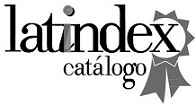Cohabitar > entre lo sustentable y lo construible
DOI:
https://doi.org/10.30972/arq.247991Palabras clave:
comunidad, usos, técnica, hábitatResumen
El objetivo de este trabajo es revisar los paradigmas habituales sobre cómo habitar la ciudad,
repensando conceptos como la densidad, hibridación, sostenibilidad, y sus distintas
representaciones éticas.
El mismo se sitúa en el Taller de Proyecto Arquitectónico y se trata de una propuesta que busca dar
soluciones arquitectónicas a las nuevas formas de convivir, en este caso, a comunidades unidas por
una actividad productiva común.
Se pretende un menor impacto de lo construido sobre el medio, en todas las escalas en que esa
huella efectuada en el territorio pueda morigerarse. Se trabaja sobre el concepto de conciencia
sostenible desde la técnica medioambiental, el paisaje y la dimensión social del proyecto. Se
cuestiona el arquetipo de la vivienda, se experimenta con medios e instrumentos de proyecto, se
contempla el tiempo y el contexto como materiales proyectuales, valorando la aptitud analítica y la
reflexión sobre la disciplina.
Citas
Gibbons, M., Limoges, C., Nowotny, H., Schwartzman, S., Scott, P., Trow, M. (1997). La nueva producción del conocimiento. Barcelona. Pomares-Corredor, Ediciones, S.A.
Marengo, A., Mantovani, G., Casella, M., Suksdorf, F., Ockstat, W., Soijet, M., et al. (2020). Parque Agrario Santa Fe Metropolitana. Una propuesta de gobernanza territorial para la agricultura periurbana. Santa Fe: Ediciones UNL.
Naredo, J y Rueda, S. (1996). La construcción de la ciudad sostenible: fundamentos. Biblioteca Ciudades para un Futuro Más Sostenible. Madrid. http:// habitat.aq.upm.es/cs/p2/lista.html.
Rueda, S (2011) “El urbanismo ecológico”. En Ezquiaga Domínguez J. M. y González Alfaya, L. Transformaciones urbanas sostenibles. Galicia, Universidad Internacional Menéndez Pelayo.
Descargas
Publicado
Versiones
- 2025-02-05 (2)
- 2024-12-27 (1)
Cómo citar
Número
Sección
Licencia

Esta obra está bajo una licencia internacional Creative Commons Atribución-NoComercial 4.0.
Los autores ceden a Arquitecno los derechos de publicación de sus trabajos, toda vez que hayan sido admitidos como parte de alguno de sus números. Ellos, no obstante, retienen los derechos de propiedad intelectual y responsabilidad ética así como la posibilidad de dar difusión propia por los medios que consideren.





52.jpg)
